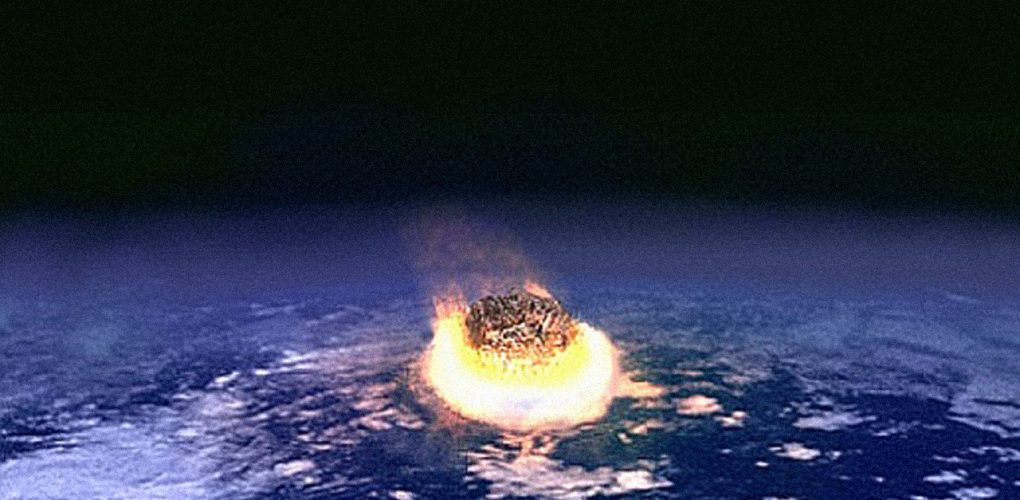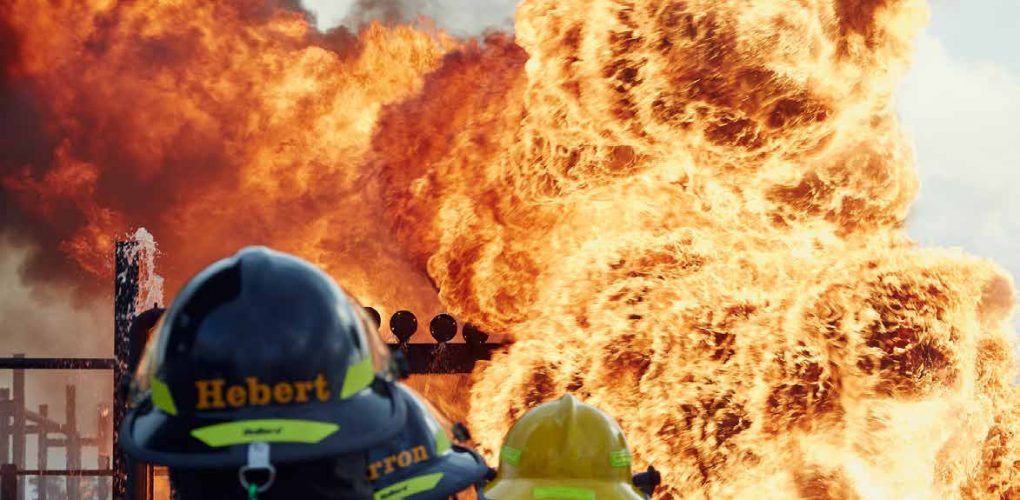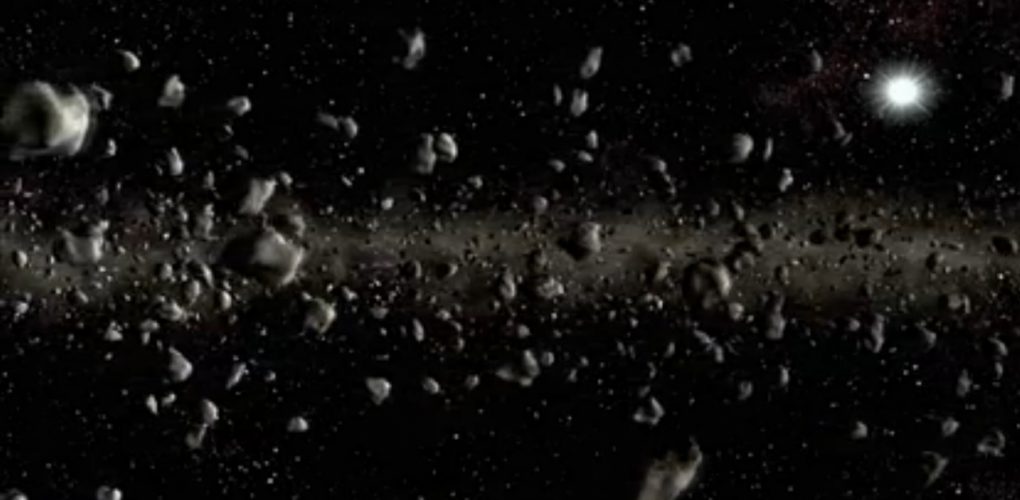Asteroids and Comets
Absolutely the worst assumption that people tend to make is that cosmic hazards are remote and that they remain the same over time. When I mention ‘cosmic hazards’ people tend to say: “We have survived quite a while without any planetary defenses so why should we bother now?” The answer is that we are a heck of a lot more vulnerable than ever before because we have a lot more people concentrated in cities that are highly dependent on vulnerable infrastructure. Another answer is that if we don’t start some serious planetary defense programs soon we will have proven ourselves no smarter than the dinosaurs.
First of all when w talk about cosmic hazards we are talking about more than asteroids. There are at least three types of concerns here: asteroids and comets, extreme solar events, and orbital space debris. This article examines the threats that come from asteroids—and why current efforts are not sufficient—and violent solar storms that threaten our satellites, our power grids and much more.
Each day literally some 100 tons of micrometeorites and cosmic dust fall to Earth. The monitoring system that is in place to detect nuclear explosions has recently confirmed that based on the last decade of observation that the asteroid impacts on Earth were 4 to 10 times more frequent than previously assumed. But the biggest vulnerability change has occurred right here on Earth. Between 1950 and 2050 world population will have grown from 3.5 billion to about 9 billion. In 1950 about 40% of us lived in towns and cities, but in 2050 we will likely be 70% urban, clustered in perhaps over 100 megacities of 10 million and more. Not only are urban targets larger, but our dependence on vulnerable modern infrastructure will have increased more than a hundredfold.
– Below, a video by the Cosmic Research Institute for Space Protection Studies (CRISPS). If you would like to be a part of this CRISPS initiative send an e-mail to Dr. Joseph N. Pelton care of the Global Space Institute. www.gsi-space.org
The Threat of Asteroids and Comets
The Unispace III Conference held in Vienna, Austria from 19 to 30 July, 1999 addressed a wide range of space issues, and one of the topics that received a good deal of attention was the threat to human civilization posed by potentially hazardous asteroids and comets. The conference recommended that coordinated international actions should be taken to minimize these threats in Recommendation 14. This led to the formation of ACTION TEAM-14 that was composed of a 12 countries with space agencies and space-related international groups. It took over a decade to reach consensus but in the last two years Action Team-14 recommended specific action to the Legal Subcommittee of the UN Committee on the Peaceful Uses of Outer Space (COPUOS). These actions were endorsed and sent on to the plenary session of COPUOS. COPUOS quickly endorsed these recommendations and sent them on the UN General Assembly and in December 2013 the following global efforts for planetary defense against potentially hazardous near earth objects were endorsed. The first action was to bring into being an International Asteroid Warning Network. This network would build on the existing capabilities represented by the Safeguard Foundation in Italy and the Minor Planet Center located at Harvard University in Cambridge, Massachusetts, USA. All satellite sensing and observation data from infrared and other space telescopes and ground based observations will be globally collected and analyzed to see if there are future potential threats to the Planet. The second action was to create a Space Mission Planning Advisory Group (SMPAG) (pronounced same page) that would be charged with devising an appropriate type space mission in response to an asteroid or comet threat once detected. This process of creating these new capabilities is now underway.
But clearly much more needs to be done. NASA has a pending mission to deploy an infrared telescope called the NEOCAM (For Near Earth Orbit Camera). This instrument would detect asteroids down to 140 meters in size—a specification set by the U.S. Congress. Meanwhile the private B612 Foundation started by Astronaut Rusty Schwieckart, and now headed by Astronaut Ed Lu, has a higher resolution IR space telescope that would be able to detect much smaller-sized (i.e. down to 30 meters) asteroids). In short the B612 IR telescope will be able to detect a much, much larger number of potentially hazardous asteroids—perhaps 500,000 to a million of these space rocks that contain the kinetic energy of a thermonuclear bomb. If you want a mental image of what we are thinking about think of a fleet of semi-trucks and large bus impacting Earth at tens of thousands of kilometers per hour.
Since 30 meters to 40 meters in size asteroids are actually potential “city killers” this higher resolution instrument by the B612 Foundation that is being fabricated by Ball Aerospace, and is known as Sentinel, seems to merit support even as a private mission. Within COPUOS Action-Team 14 has on-going responsibility to address asteroid and comet threats but unless we can detect and track all of the potential “city killers” out there we have no way of developing a defense system.
– Below, a video simulation of the effects of the impact of an asteroid to Earth.
An Action Plan to Cope with Cosmic Hazards and Planetary Defense
Cosmic Hazards can no longer just be noted and ignored. We need actions with regard to these threats, and these means much more than is currently the case. A reasonable action plan includes the following steps.
1. To further the detection process the B612 Sentinel Infrared Telescope Satellite project needs to be funded and launched and the NASA NEOCAM Infrared Telescope should be launched as well. The first step is better detection of the threats. The U.S. Congress should change its detection guideless down from 140 meter asteroids to the 30 meters to 40 meters range since these are still large enough to be “city killers” for large metropolises. Unfortunately there may be 500K to a million potentially hazardous asteroids of this size.
2. The UN General Assembly sanctioned actions to create the International Asteroid Warning Network (IAWN) and the Space Mission Planning Advisory Group (SMPAG) need to be fully established as quickly as possible and universal backing provided to these efforts. The five hundred thousand to a million asteroid and comets potential threats should be identified and action plans developed to those bodies that could potentially do us the greatest harm.
3. The UN Peacekeeping Authority should be organized to take command of military resources need to respond to recovery actions in the event of a major cosmic strike against the worst possible cosmic catastrophe as a backup plan. Technological capability needs to added to these UN forces that are competent to deal with such issues as power outages, satellite outages, or other infrastructure losses.
Conclusion
Efforts are now underway to create a new Cosmic Research Institute for Space Protection Studies (CRISPS). The purpose of the Institute will be to produce research reports, videos, and public information release to inform the world about the nature of cosmic threats to long-term human survival. It will also emphasize the shorter-term threats to vital infrastructure from extreme solar weather. Our mission is to prove that we are indeed smarter than the dinosaurs. A proposition that unfortunately remains in doubt. If you would like to be a part of this CRISPS initiative send an e-mail to Dr. Joseph N. Pelton of the Global Space Institute www.gsi-space.org.
If you liked this article, don’t forget to share it with your friends! Also, check the video below, or directly on YouTube.
– By Joseph N. Pelton, PhD, Former Dean, International Space University and Executive Board, International Association for the Advancement of Space Safety (IAASS)



























































![A trajectory analysis that used a computational fluid dynamics approach to determine the likely position and velocity histories of the foam (Credits: NASA Ref [1] p61).](https://www.spacesafetymagazine.com/wp-content/uploads/2014/05/fluid-dynamics-trajectory-analysis-50x50.jpg)


